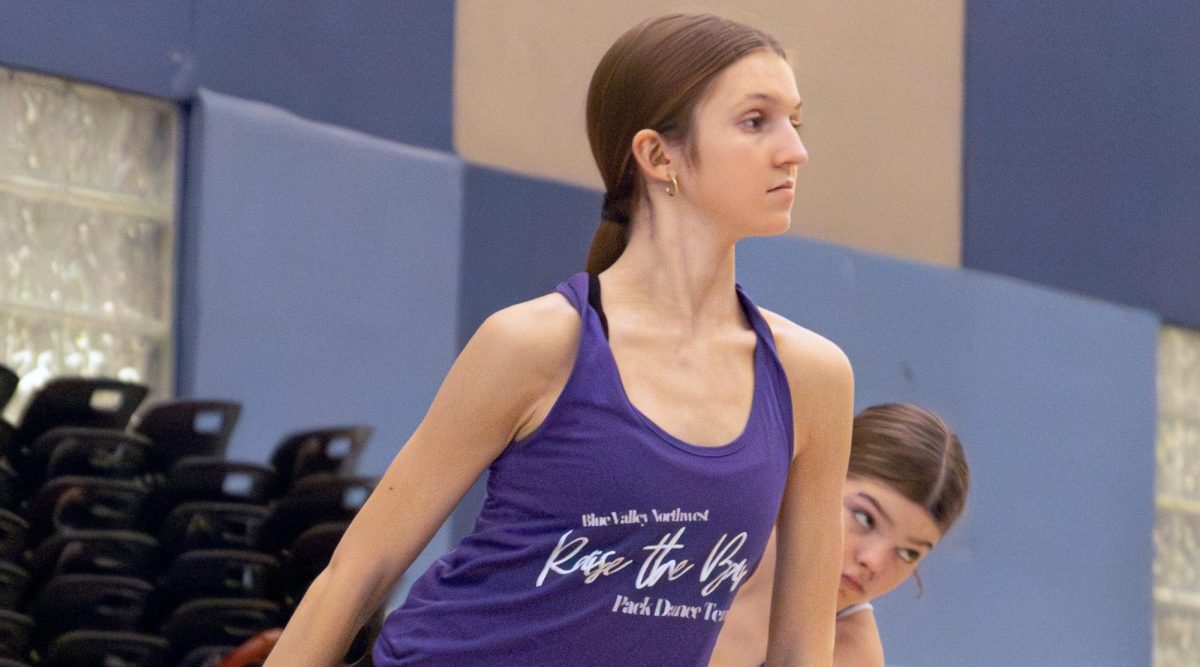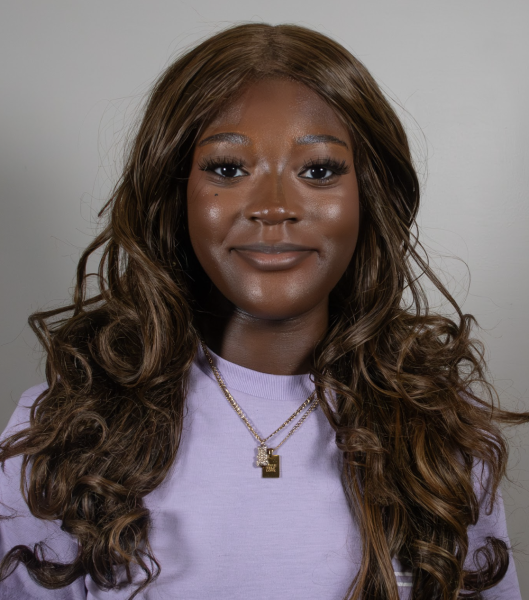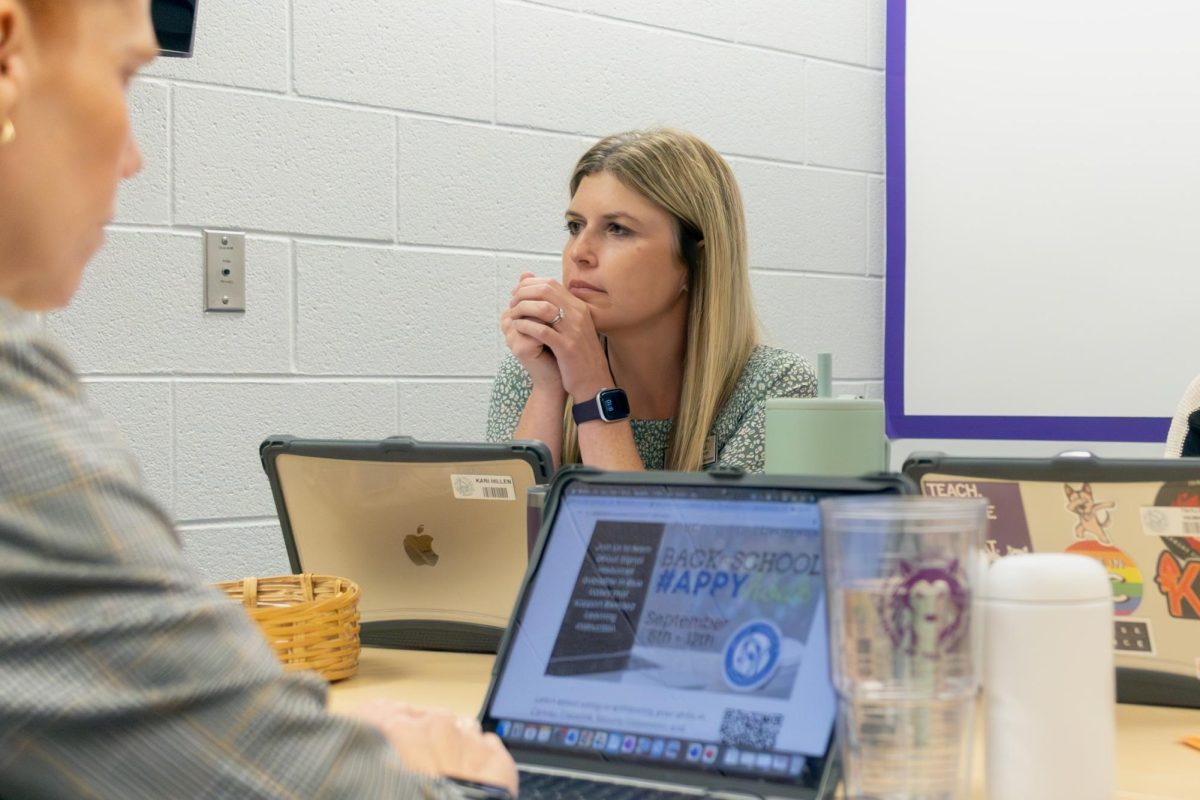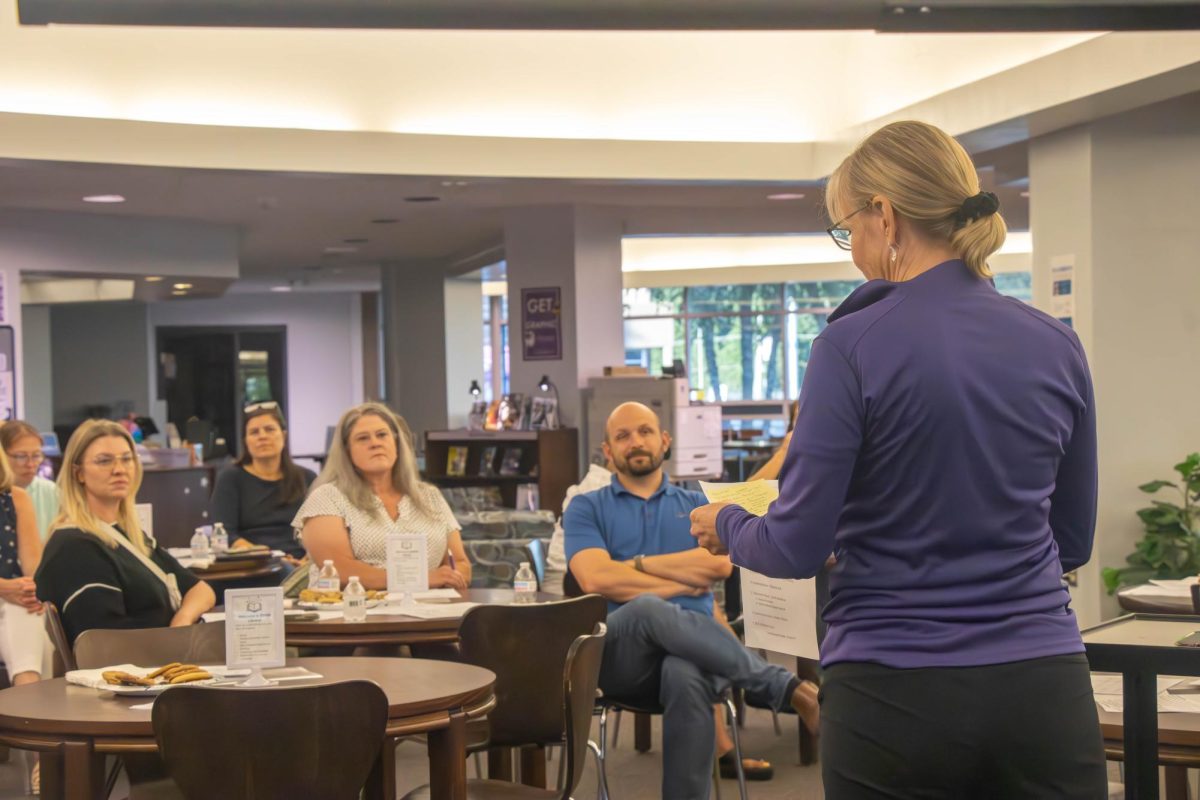Everyday tasks like picking up a dropped pencil can be difficult for some, including senior Macie Gorman, who was diagnosed with scoliosis at 12 years old.
Scoliosis, a condition where the spine curves abnormally, came as a shock to Gorman.
“I was completely surprised,” Gorman said. “I didn’t feel any pain or anything.”
Her diagnosis came during a routine checkup when her doctor asked her to bend over and touch her toes. Noticing an uneven curve in her spine, her doctor ordered an X-ray, confirming the condition. With no family history of scoliosis, Gorman said she hadn’t expected it.
She said she was lucky it was caught early before her growth stopped. Otherwise, surgery would have been the only option to correct it.
For the past six years, Gorman went through three different braces, each designed to keep her spine from curving further as she grew. She said adjusting to each of the braces was difficult, especially how it restricted movement.
“Sometimes [I’ll] be uncomfortable in the brace, whether it’s rubbing in a spot or something like that, but you have to just push through it,” Gorman said.
While Gorman’s condition required her to physically adapt, social studies teacher Robert Meacham had to adjust his daily routine after being diagnosed with Type 1 diabetes at 30.
Meacham said he first noticed something was wrong when he started using the restroom far more often than usual. Initially thinking he was having a heart attack, he got checked and discovered his blood sugar was alarmingly high.
Since then, both Gorman and Meacham have had to adjust their lives and schedules to manage their conditions.
Meacham has had to adjust his eating habits and change his daily routine. He must now take about 100 units of insulin a day, along with medication to protect his kidneys.
“It’s gotten easier as years have gone along, but it was all kind of intimidating at first,” Meacham said.
Like Meacham, Gorman has also reached a point where her condition no longer requires the same level of intervention.
Now, she is no longer required to wear a brace since she has stopped growing. Her doctor gradually reduced the hours she had to wear it, starting with just nights before phasing it out completely.
Scientific Medical Director of the Center for Children’s Healthy Lifestyles and Nutrition Helena Laroche spends her time researching how chronic conditions like these impact patients’ daily lives. She said managing such illnesses often requires more than just medication.
“Some people can do all the lifestyle things right and still need some extra help. That’s not their doing,” Laroche said. “That’s because it’s more complicated than just those things.”
For Gorman, staying active has been a major factor in managing her scoliosis. As a dancer with the Pack Dance Team and Jody Phillips Dance Company, Gorman said she sometimes experiences discomfort while performing her sport, but has learned to work through it.
“Once in a while, my back will be tight, but once I start moving and stretch it out, I’m fine,” Gorman said.
Laroche emphasized the importance of movement, saying that while some people enjoy sports, others just need to find a way to stay active in a way that works for them.
“Some people like sports, but some people don’t, and that’s okay. It’s just about finding some time to move and do things,” Laroche said.
Similarly, Meacham has learned to manage his diabetes, even when unexpected challenges arise.
“I remember right before lunch at fifth hour, [my blood sugar got] low [but I continued] on talking, but I wasn’t really sure if I was making any sense,” Meacham said.
Beyond managing physical discomfort, Gorman said one of the biggest challenges was balancing her schedule around her brace.
“I was like, ‘If I have a full schedule today, when can I wear my brace and when can I not?’” Gorman said. “If my friends are doing something [I ask myself] if taking off my brace for that time is worth it or not.”
She also had to adjust her wardrobe to accommodate her brace.
“I struggled to find baggy enough T-shirts because [the brace] has velcro straps on the back, so the velcro would get stuck on a tighter shirt,” Gorman said.
Similarly, Meacham had to change his diet to regulate his blood sugar.
“Diabetes is counting carbs—not necessarily not eating carbs, but keeping it at a reasonable number,” he said. “It affects the kinds of food you can eat. It’s more about carbs than it is really sugar.”
Despite the adjustments, Gorman said she has had continued support from those around her. At Robeks, where she works, she said coworkers help lift heavy boxes since bending down is difficult for her.
Though Gorman still has scoliosis, her spine has stabilized, and her time in a brace is over.
For Meacham, diabetes remains a part of his daily life, but he has found ways to adapt.
“It seems like it’s always right when I’m about to go do something, I have to change my pump out, and it’s never a good time,” Meacham said. “But it’s a small price to pay. I feel really pretty normal for the most part.”








